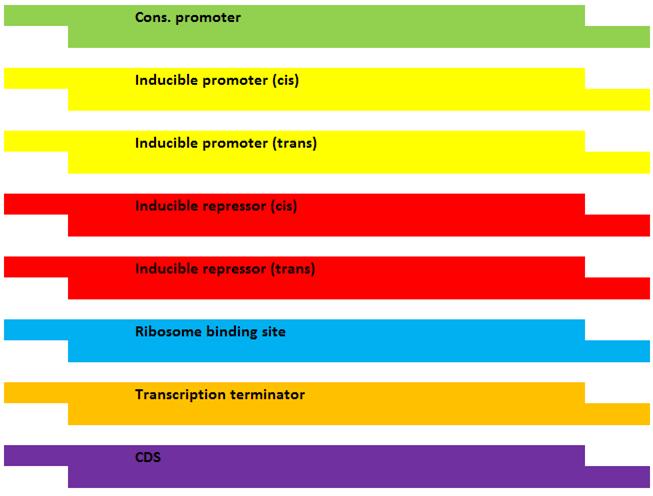Team:Alberta-North-RBI E/Genetics
From 2012e.igem.org

Our Microscopic Friend
We intend to engineer a Pseudomonas putida strain containing a “switch” system enabling the manufacture of either shikimic acid (SA) or cinnamic acid (CA) as a major product. Future embodiments of this strain will contain additional directing mechanisms whereby a multitude of derivative chemicals can be favored.
The enzymatic activities leading to the production of SA will be enhanced by the addition of extra-chromosomal copies of endogenous genes modified such that expression is constitutive. Where necessary, these genes will be further modified through site-directed mutagenesis to abolish feedback regulation. Optimization of metabolism to SA is based on the invention(s) described in US patents 168056 and 6613552.
Enzymatic activities which lead from SA to phenylalanine (Phe) will be abolished by removing the underlying endogenous genes. These endogenous genes, in addition to a codon-optimized Rhodosporidium toruloides gene encoding for a phenylalanine ammonia-lysase (PAL) enzyme, will be re-introduced at an extra-chromosomal locus as modified genes containing inducible promoter/repressor “switches” allowing us to direct metabolism toward CA at will. The “switch” mechanism will require “cis” DNA elements immediately upstream of each enzyme’s coding sequence (CDS). In addition, each regulatory system (ie. induction, repression) will require a constitutively-regulated “trans” element encoded at a different locus which produces the protein component.
To enhance the yield of our desired products, two additional categories of changes will be made to our host strain. First, enzymatic activities which direct metabolites away from the desired pathway will be abolished by removing the underlying endogenous genes and, furthermore, transporter proteins responsible for re-uptake of SA or CA from the medium will be removed.
 "
"


